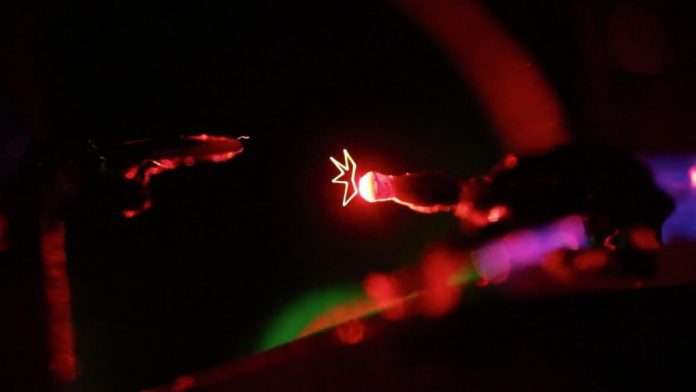Scientists at Brigham Young University (BYU) in Utah have figured out how to use lasers to create sci-fi-style holograms.
The holograms closely resemble and are inspired by laser displays seen in science fiction, such as the holodeck and phasers in “Star Trek” and lightsabers in “Star Wars.” The holograms don’t require a screen or computer graphics.
“Most 3D displays require you to look at a screen, but our technology allows us to create images floating in space — and they’re physical,” said lead researcher Dan Smalley in a video released by BYU.
Smalley and his team detailed their findings in a paper published last month in Nature’s Scientific Reports.
The displays use technology developed by Smalley and his team in 2018. They employ the use of “optical trap displays,” where a single particle is trapped in the air with a laser beam and then rapidly moved around, creating a trail of light suspended in the air.
Using this technology, Smalley and his team have been able to create simple animations, such as a virtual stick figure walking on a person’s finger.
“We did want to show how this image can interact with a human,” said Smalley, who likens it to “a 3D printer for light.”
“Unlike the movies, where the lightsabers or the photon torpedoes never really existed in physical space. These are real, and if you look at them from any angle, you will see them existing in that space,” said Smalley.





























